How to Cope with the Aftermath of a Disaster?
Disasters can strike at any moment, leaving a trail of chaos and emotional turmoil in their wake. Whether it’s a natural disaster like a hurricane or an unexpected event such as a fire, the aftermath can feel overwhelming. You might be asking yourself, “How do I even begin to cope with the devastation?” Well, you’re not alone, and there are practical strategies that can help you navigate this challenging journey. It's essential to understand that recovery is not just about rebuilding what was lost; it's also about healing your mind and spirit. In this article, we will explore effective methods and emotional support mechanisms that can foster resilience and help you rebuild your life after a disaster.
Recognizing the psychological effects of disasters is crucial for recovery. After experiencing a disaster, it’s common to feel a whirlwind of emotions—fear, anger, confusion, and even guilt. These feelings can be as destructive as the disaster itself if left unacknowledged. It's important to realize that these emotional responses are entirely normal. Acknowledging your feelings is the first step toward healing. Remember, it’s okay to feel lost or overwhelmed; these emotions are part of the human experience. Engaging in open conversations with friends or family about your feelings can help lighten the emotional load. It's like carrying a heavy backpack; sharing the weight with someone else makes the journey a little easier.
Establishing a strong support system is vital for coping with the aftermath of a disaster. Connecting with family, friends, and community resources can provide you with the emotional support you need during recovery. Think of your support network as a safety net—when you fall, they are there to catch you. Reach out to those who care about you; don’t hesitate to lean on them. You can also engage with local community groups or organizations dedicated to disaster recovery. These connections can provide not only emotional support but also practical assistance.
Sometimes, the weight of emotions can be too much to bear alone, and seeking professional assistance can be an essential step in recovery. Mental health professionals, such as psychologists and counselors, are trained to help individuals navigate their feelings after traumatic events. They can provide you with coping strategies and tools to process your experiences effectively. Understanding the types of mental health professionals available can empower you to find the right fit for your needs. Whether it’s individual therapy or group sessions, professional help can be a game-changer in your healing journey.
Different therapeutic approaches can be beneficial for disaster survivors. Cognitive-behavioral therapy (CBT) is one popular method that focuses on changing negative thought patterns and behaviors. It’s like rewiring your brain to respond differently to stressors. On the other hand, group therapy offers a communal space where individuals can share their experiences and support one another. The effectiveness of these therapies varies from person to person, so it’s essential to find what resonates with you.
Joining support groups provides a sense of community and belonging. Sharing experiences with others who have faced similar challenges can be incredibly cathartic. It’s like finding a group of fellow travelers on the same rocky road; you can share stories, laugh, and even cry together. Support groups often foster an environment of understanding and empathy, which can be crucial for emotional healing.
Implementing self-care practices can significantly enhance recovery. Taking time for yourself is not selfish; it’s necessary. Simple techniques such as mindfulness, meditation, or even physical activity can promote emotional well-being. Think of self-care as recharging your phone; if you don’t plug it in, it will eventually die. Activities like yoga or going for a walk can help clear your mind and reduce anxiety. Remember, small steps can lead to significant changes, so don’t underestimate the power of self-care.
Reconstruction efforts are vital for physical and emotional recovery. Rebuilding your home, community, and life after a disaster can feel like an insurmountable task. However, taking practical steps can make the process more manageable. Start by assessing what needs to be rebuilt and prioritize your needs. It’s essential to set realistic goals and take things one step at a time, much like putting together a puzzle. Each piece represents a small victory in your recovery journey.
Understanding available financial support can aid in recovery. Government programs and non-profit organizations often provide assistance to disaster-affected individuals. It’s crucial to research and apply for these resources as they can help you get back on your feet. You might be surprised to find that there are many resources available to help you rebuild your life.
Planning for long-term recovery is essential for sustainable rebuilding. Creating a comprehensive recovery plan that addresses both immediate and future needs can set you up for success. Consider factors such as housing, employment, and emotional support as you draft your plan. It’s like mapping out a road trip; knowing your destination and the stops along the way can help you navigate the journey more effectively.
- What should I do first after a disaster? Focus on safety and securing your immediate environment before addressing emotional needs.
- How can I help someone who has experienced a disaster? Listen without judgment and offer practical support, such as helping with daily tasks or connecting them with resources.
- Is it normal to feel anxious after a disaster? Yes, anxiety is a common response; acknowledging it is the first step toward healing.

Understanding the Emotional Impact
Disasters can have a profound effect on individuals and communities, leaving emotional scars that may take time to heal. It's essential to recognize that the psychological impact of such events can manifest in various ways. Many people experience a rollercoaster of emotions, ranging from shock and disbelief to anger and sadness. This emotional turmoil is completely normal and serves as a natural response to traumatic events.
One of the first steps in coping with these feelings is acknowledging them. Ignoring or suppressing emotions can lead to more significant issues down the line. It's crucial to allow yourself to feel and express what you're going through. For instance, you might find yourself feeling overwhelmed by grief or anxiety, and that's perfectly okay. Understanding these emotional responses can help you navigate through the healing process.
Common emotional reactions to disasters include:
- Shock and Denial: Initially, many people find it hard to believe that the disaster has occurred, often feeling numb or disconnected.
- Anger: As the reality sets in, feelings of frustration and anger can surface, directed at the situation, at others, or even at oneself.
- Guilt: Survivors may grapple with feelings of guilt, questioning why they survived when others did not.
- Sadness: A deep sense of loss can emerge, whether it’s the loss of loved ones, homes, or a sense of safety.
- Anxiety: Many individuals experience heightened levels of anxiety, worrying about the future and their ability to cope.
Understanding these emotional responses is crucial for recovery. It allows individuals to validate their feelings and recognize that they are not alone in their experiences. Moreover, discussing these emotions with trusted friends or family members can foster a sense of connection and support, which is vital during such challenging times.
In addition to personal feelings, disasters can also affect entire communities, leading to collective grief and trauma. This shared experience can either strengthen community ties or create divisions, depending on how individuals choose to respond. Engaging in community discussions and support groups can help people process their emotions together, reinforcing the idea that healing is not a solitary journey.
As we explore the emotional impact of disasters, it becomes clear that recovery is not just about rebuilding physical structures; it’s also about addressing the emotional wounds that linger long after the event. By understanding and acknowledging these feelings, individuals can take the first steps toward healing, fostering resilience and hope for the future.
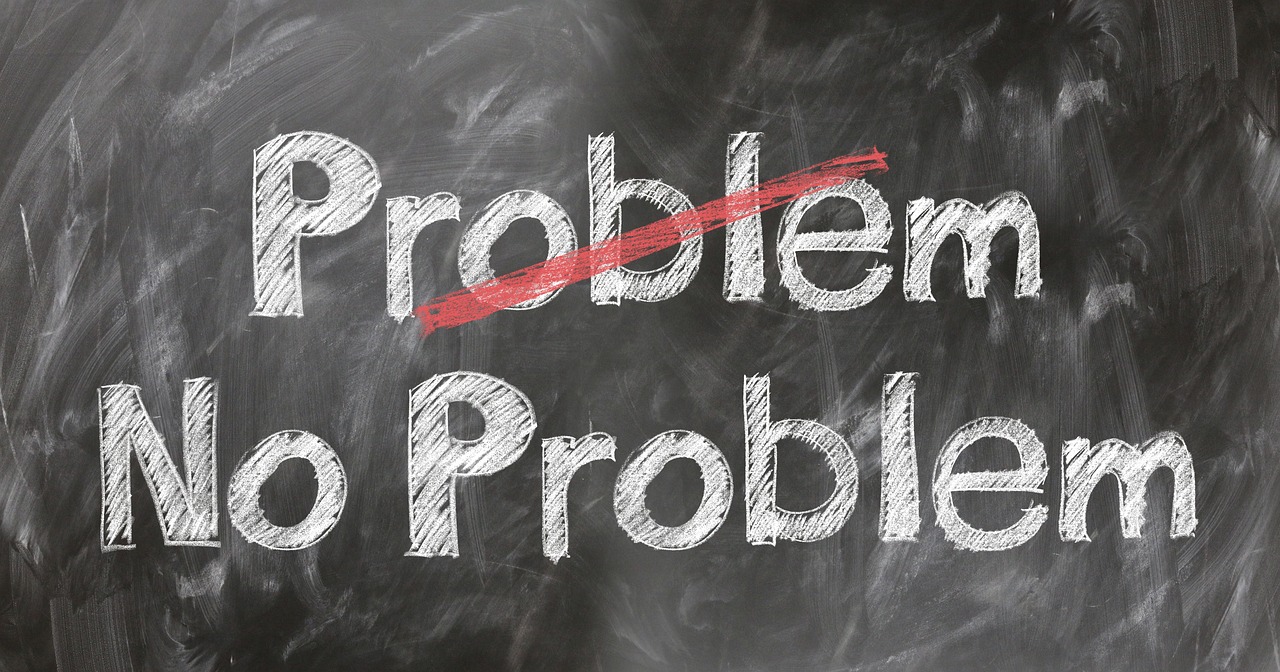
Building a Support Network
When disaster strikes, it can feel like the world has turned upside down. In such challenging times, becomes not just important, but essential. Think of your support network as a safety net, designed to catch you when you fall. It consists of family, friends, neighbors, and community resources that can provide emotional, physical, and even financial support. But how do you go about establishing this crucial network?
First and foremost, reach out to those closest to you. Family and friends can be a great source of comfort. They know you well and can offer a listening ear or a shoulder to cry on. It’s important to communicate openly with them about your feelings and needs. You might say, “I really need someone to talk to,” or “I could use some help with everyday tasks.” This honesty can help deepen your connections and foster a sense of solidarity.
Next, consider expanding your network by connecting with local community resources. Many communities have organizations dedicated to helping disaster survivors. These can include non-profits, religious groups, and even local government agencies. They often provide essential services like counseling, food distribution, and shelter. By reaching out to these organizations, you can not only find assistance but also meet others who are going through similar experiences.
Moreover, don't underestimate the power of online communities. In today’s digital age, social media and online support groups can be lifelines. Platforms like Facebook, Reddit, or specialized forums allow you to connect with others who have faced similar disasters. Sharing your story and hearing others' can be incredibly therapeutic. Just remember to choose platforms that prioritize safety and privacy.
Another effective way to build your support network is by joining local support groups. These groups often meet regularly and provide a safe space to share experiences and feelings. Being surrounded by others who understand what you’re going through can be immensely comforting. You might find that these interactions not only help you cope but also lead to lasting friendships.
In addition to emotional support, practical help can also come from your network. For instance, if you’re overwhelmed with daily tasks like grocery shopping or household chores, don’t hesitate to ask for help. You might say to a friend, “Could you help me organize my home?” or “I’d appreciate it if you could pick up some groceries for me.” People often want to help; they just need to know how.
In conclusion, building a support network is a vital step in the recovery process after a disaster. It’s about creating connections that offer emotional comfort, practical help, and a sense of belonging. Remember, you don’t have to go through this alone. By reaching out and connecting with others, you can foster resilience and find strength in community.
Q: What should I do if I feel isolated after a disaster?
A: Feeling isolated is common after a disaster. Try reaching out to friends or family, or consider joining local support groups or online communities for connection.
Q: How can I find local support resources?
A: You can search online for local non-profits, community centers, or government agencies that offer assistance for disaster survivors. Social media can also be a good resource for finding local groups.
Q: What if I’m uncomfortable sharing my feelings?
A: It’s completely normal to feel hesitant. Start by sharing small thoughts or feelings with someone you trust. Over time, you may find it easier to open up.
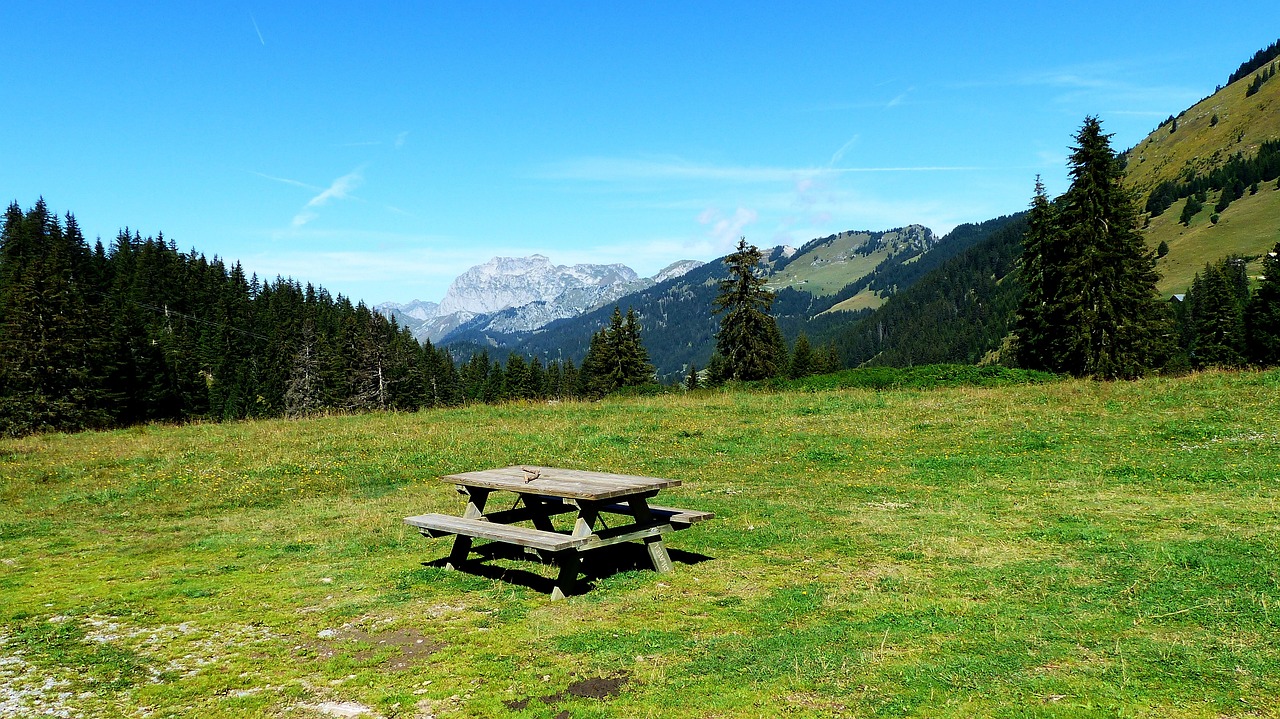
Finding Professional Help
When the dust settles after a disaster, it's common to feel overwhelmed, lost, or even paralyzed by emotions. This is where seeking professional help becomes a pivotal step in your recovery journey. Just like a soldier needs a medic after a battle, disaster survivors often need the expertise of mental health professionals to navigate the psychological aftermath. But how do you find the right help? First, it’s important to recognize that there are various types of mental health professionals available to assist you.
Psychologists, psychiatrists, social workers, and counselors all play unique roles in the healing process. Psychologists often provide therapy and counseling, helping you understand and process your feelings. On the other hand, psychiatrists can prescribe medication if needed, addressing any underlying mental health conditions that may have been exacerbated by the disaster. Social workers can assist with practical needs, connecting you to community resources, while counselors offer guidance and support tailored to your specific experiences.
So, how do you go about finding the right professional? Start by reaching out to your primary care physician, who can refer you to a trusted mental health expert. You can also explore local mental health clinics or organizations that specialize in disaster recovery. Many of these organizations provide services at reduced costs or even for free, ensuring that financial barriers don’t prevent you from getting the help you need.
Additionally, don't hesitate to utilize online resources. Websites like Psychology Today offer directories where you can filter professionals by specialty, location, and insurance acceptance. This can make the daunting task of finding help feel much more manageable.
It’s also important to remember that seeking help is a sign of strength, not weakness. Just like you wouldn’t hesitate to see a doctor for a physical injury, prioritizing your mental health is equally crucial. Think of it as assembling a toolkit for recovery—each tool (or professional) serves a specific purpose in helping you rebuild your life.
In the end, finding professional help is about taking that first step towards healing. Whether it’s through therapy, medication, or community support, the right professional can guide you through the stormy seas of recovery and help you find your footing once again.
- How do I know if I need professional help? If you're feeling overwhelmed, experiencing persistent sadness, anxiety, or have difficulty functioning in daily life, it may be time to seek help.
- What should I expect in therapy? Expect a safe space to discuss your feelings, learn coping strategies, and work towards healing at your own pace.
- Are there online therapy options available? Yes, many therapists offer online sessions, making it easier to access help from the comfort of your home.
- How can I find a therapist that specializes in disaster recovery? Look for mental health professionals with experience in trauma and disaster recovery, and don’t hesitate to ask about their specific expertise during your initial consultation.
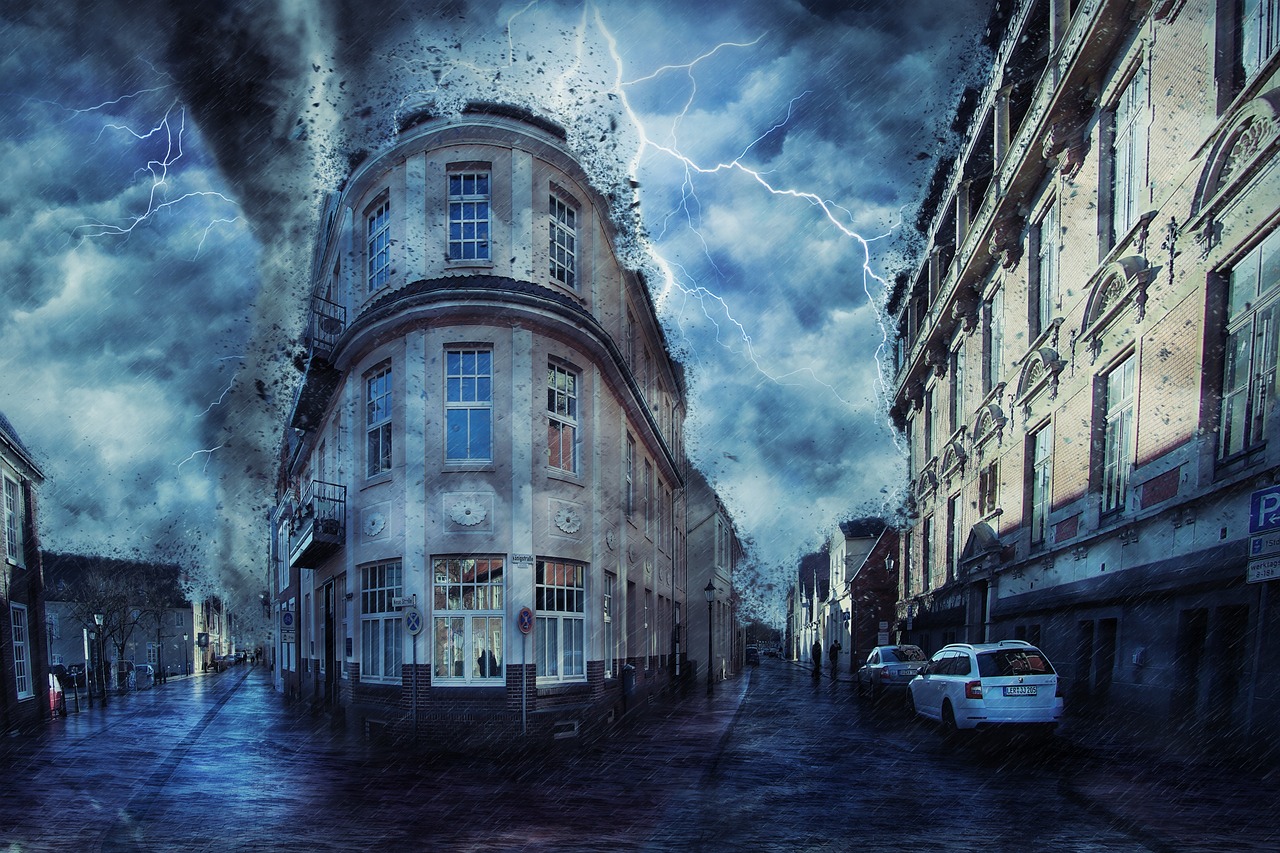
Therapy Options
When it comes to coping with the aftermath of a disaster, exploring can be a game changer. Many survivors find themselves navigating a whirlwind of emotions, and having professional support can make all the difference. Think of therapy as a lifeline that helps you stay afloat in turbulent waters. There are several types of therapeutic approaches that cater to the unique needs of disaster survivors, each providing a different pathway to healing.
One of the most popular forms of therapy is Cognitive Behavioral Therapy (CBT). This approach focuses on identifying and changing negative thought patterns and behaviors that can arise after a traumatic event. Imagine your mind as a tangled ball of yarn; CBT helps you untangle those knots, allowing you to see things more clearly. Studies have shown that CBT can significantly reduce symptoms of anxiety and depression, making it an effective choice for many.
Another valuable option is Group Therapy. This type of therapy allows individuals to come together and share their experiences in a safe and supportive environment. It’s like a support group but with the added benefit of a trained therapist guiding the conversation. The power of group therapy lies in the shared experiences; hearing others’ stories can help you realize that you’re not alone in your struggles. Many participants find comfort in knowing that others are navigating similar challenges, which can foster a sense of community and belonging.
For those who prefer a more creative outlet, Expressive Arts Therapy might be the way to go. This form of therapy encourages individuals to express their feelings through art, music, or writing. It's a fantastic way to process emotions that might be difficult to articulate verbally. Think of it as a way to paint your feelings without the pressure of creating a masterpiece. This therapeutic approach can be particularly helpful for people who find it challenging to communicate their thoughts and emotions directly.
In addition to these options, there are also specialized therapies such as Eye Movement Desensitization and Reprocessing (EMDR), which is particularly effective for those dealing with post-traumatic stress disorder (PTSD). EMDR helps individuals process distressing memories by using guided eye movements, making it easier to reframe and integrate those memories into their life narrative. It's like taking a mental snapshot and then editing it to make it less painful.
When considering therapy, it’s essential to find a qualified mental health professional who understands the impacts of trauma and can tailor the approach to your specific needs. Many therapists offer a free initial consultation, allowing you to gauge whether their style aligns with your comfort level. Remember, seeking help is not a sign of weakness; it’s a courageous step towards healing and reclaiming your life.
Ultimately, the right therapy option can provide you with the tools to navigate the emotional landscape after a disaster. Whether you opt for individual therapy, group sessions, or a creative approach, the key is to take that first step and reach out for help. You deserve to heal and thrive after experiencing such profound challenges.
- What is the best type of therapy for disaster survivors? The best type of therapy varies for each individual. Cognitive Behavioral Therapy and Group Therapy are popular options, but it’s essential to find what resonates with you.
- How do I find a qualified therapist? You can start by asking for referrals from your primary care physician, checking online directories, or contacting local mental health organizations.
- Is therapy covered by insurance? Many insurance plans cover therapy, but it’s important to check your specific policy for details on coverage and co-pays.
- How long does therapy typically last? The duration of therapy can vary widely depending on individual needs and goals. Some may benefit from a few sessions, while others may engage in longer-term therapy.
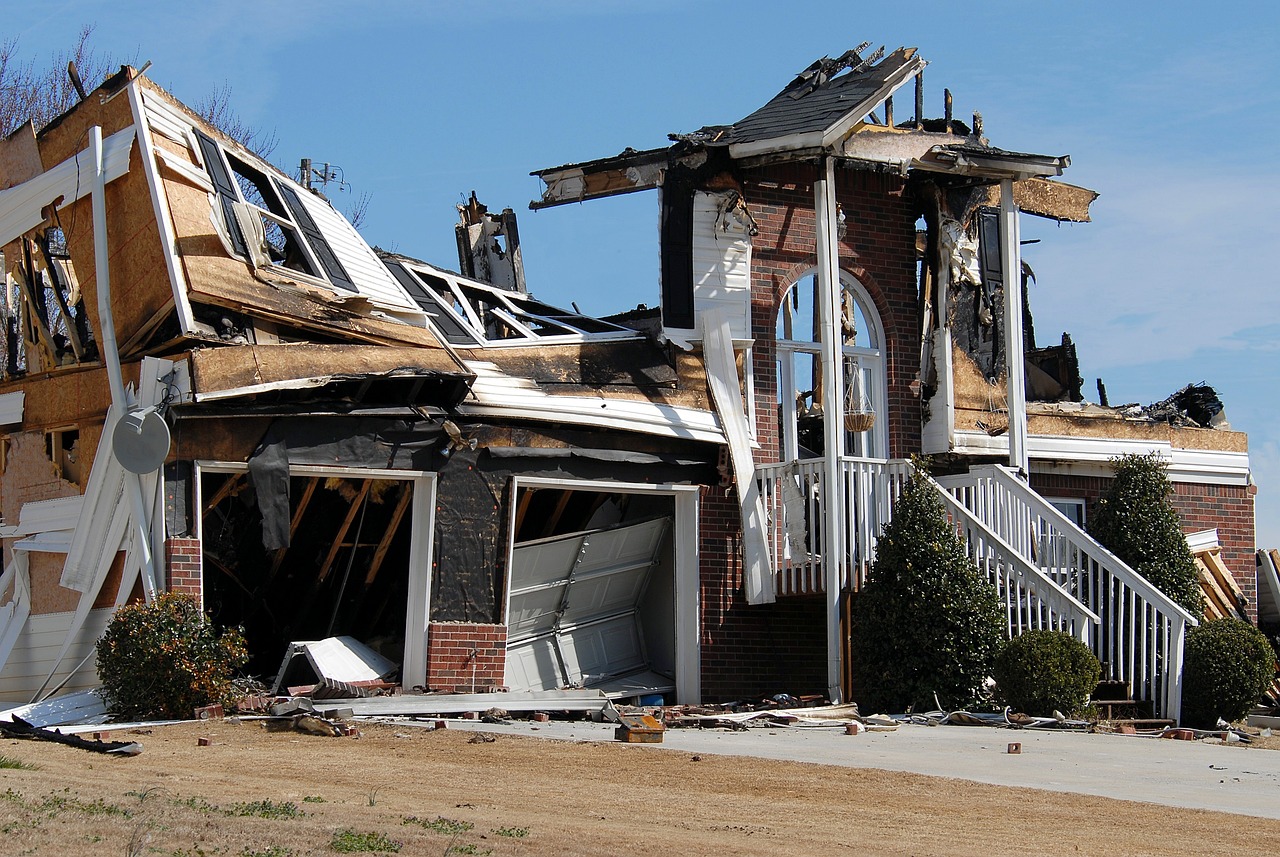
Support Groups
Support groups can be a lifeline for individuals grappling with the aftermath of a disaster. Imagine being in a room filled with people who truly understand what you’re going through. It’s like finding a warm blanket on a cold night; suddenly, you’re not alone in your struggle. These groups provide a space where you can share your experiences, express your feelings, and receive encouragement from others who have faced similar challenges. The emotional weight of disasters can often feel isolating, but support groups can help bridge that gap.
One of the most significant benefits of joining a support group is the sense of community it fosters. In these groups, members often share not just their stories but also coping strategies that have worked for them. This exchange of ideas can be incredibly empowering. You might hear someone say, “I found journaling to be therapeutic,” or “Talking to my family helped me process my emotions.” Such insights can provide new perspectives and practical tools for your own healing journey.
Additionally, support groups can be tailored to specific experiences, such as those for survivors of natural disasters, fires, or even man-made crises. This focused approach allows members to connect on a deeper level, as they navigate the unique challenges associated with their particular circumstances. It’s like being part of a club where everyone shares the same membership card—each member’s story is different, but the underlying theme of resilience binds them together.
Moreover, the emotional support you receive in these groups can significantly enhance your recovery process. When you share your feelings, you’re not just venting; you’re actively working through your trauma. It’s a form of catharsis that can lead to profound healing. Feeling heard and understood can help reduce feelings of anxiety and depression, which are common after traumatic events. In a supportive environment, you can explore your emotions without fear of judgment.
Support groups can also offer practical advice on navigating the recovery process. Members often discuss resources, such as therapy options, financial assistance programs, and community services. This information-sharing can be invaluable, especially when you’re feeling overwhelmed and unsure of where to turn. By pooling resources and knowledge, group members can help each other find the best paths to recovery.
In conclusion, joining a support group can be a transformative step in coping with the aftermath of a disaster. It’s not just about sharing your pain; it’s about building a network of understanding and support that can uplift you during your darkest times. If you’re considering joining a support group, remember that you’re taking a courageous step towards healing. You deserve to be heard, supported, and empowered on your journey to recovery.
- What is a support group? A support group is a gathering of individuals who share common experiences or challenges, providing a safe space for sharing and support.
- How do I find a support group? You can search online, contact local mental health organizations, or consult with a healthcare provider for recommendations.
- Are support groups confidential? Most support groups emphasize confidentiality to create a safe environment for sharing personal experiences.
- Can I join more than one support group? Yes, many individuals find it beneficial to participate in multiple groups that address different aspects of their recovery.

Self-Care Strategies
After a disaster, the chaos can leave us feeling like a ship lost at sea, tossed around by waves of uncertainty and fear. It's during these tumultuous times that self-care becomes not just important, but essential. Implementing effective self-care strategies can act as a lifebuoy, helping us to navigate through the emotional storm and regain our footing.
First and foremost, mindfulness emerges as a powerful tool in the aftermath of trauma. By practicing mindfulness, individuals can ground themselves in the present moment, reducing anxiety about the future or regrets about the past. Techniques like meditation or deep-breathing exercises can help calm a racing mind. Just imagine your thoughts as leaves floating down a stream; instead of grasping at them, you simply let them pass by, creating space for peace and clarity.
Physical activity is another crucial component of self-care. Engaging in regular exercise can significantly boost your mood by releasing endorphins, those wonderful chemicals in our brain that act as natural painkillers and mood elevators. Whether it’s a brisk walk around the block, a yoga session in your living room, or a dance party in your kitchen, moving your body can help shake off some of the emotional heaviness. You might even be surprised at how invigorating it feels to get your heart pumping!
Nutrition also plays a vital role in recovery. In times of stress, it can be tempting to reach for comfort foods that are high in sugar and fat. However, nourishing your body with a balanced diet rich in fruits, vegetables, whole grains, and lean proteins can enhance your overall well-being. Think of your body as a car: it runs best on high-quality fuel. So, fill your plate with vibrant colors and wholesome ingredients to keep your energy levels up and your mood steady.
Moreover, establishing a daily routine can provide a sense of normalcy amidst the chaos. Routines help create structure, which can be incredibly comforting when everything else feels unpredictable. Start small; perhaps set a schedule for when you wake up, eat meals, and go to bed. As you build this framework, you may find that it helps to anchor you, providing a sense of control over your life again.
Lastly, don’t underestimate the power of social connections. Reaching out to friends and family can provide emotional support and foster a sense of belonging. Even a simple phone call or text can remind you that you’re not alone in this journey. If you’re comfortable, consider sharing your feelings and experiences with others; it can be incredibly cathartic. Remember, vulnerability is a sign of strength, not weakness.
In conclusion, self-care is not a one-size-fits-all approach. It’s about discovering what works best for you and incorporating those practices into your daily life. Whether it’s mindfulness, physical activity, proper nutrition, establishing routines, or fostering social connections, each strategy can contribute to your healing process. Embrace these self-care strategies, and you may find that they not only help you cope with the aftermath of a disaster but also empower you to thrive in the face of adversity.
- What is self-care? Self-care refers to the activities and practices that individuals engage in to maintain and enhance their health and well-being.
- How can mindfulness help after a disaster? Mindfulness can reduce anxiety and promote emotional stability by encouraging individuals to focus on the present moment rather than worrying about the past or future.
- What types of physical activity are best for recovery? Any form of physical activity that you enjoy can be beneficial, whether it's walking, yoga, dancing, or even gardening.
- Why is social connection important in recovery? Social connections provide emotional support, reduce feelings of isolation, and enhance overall resilience during difficult times.
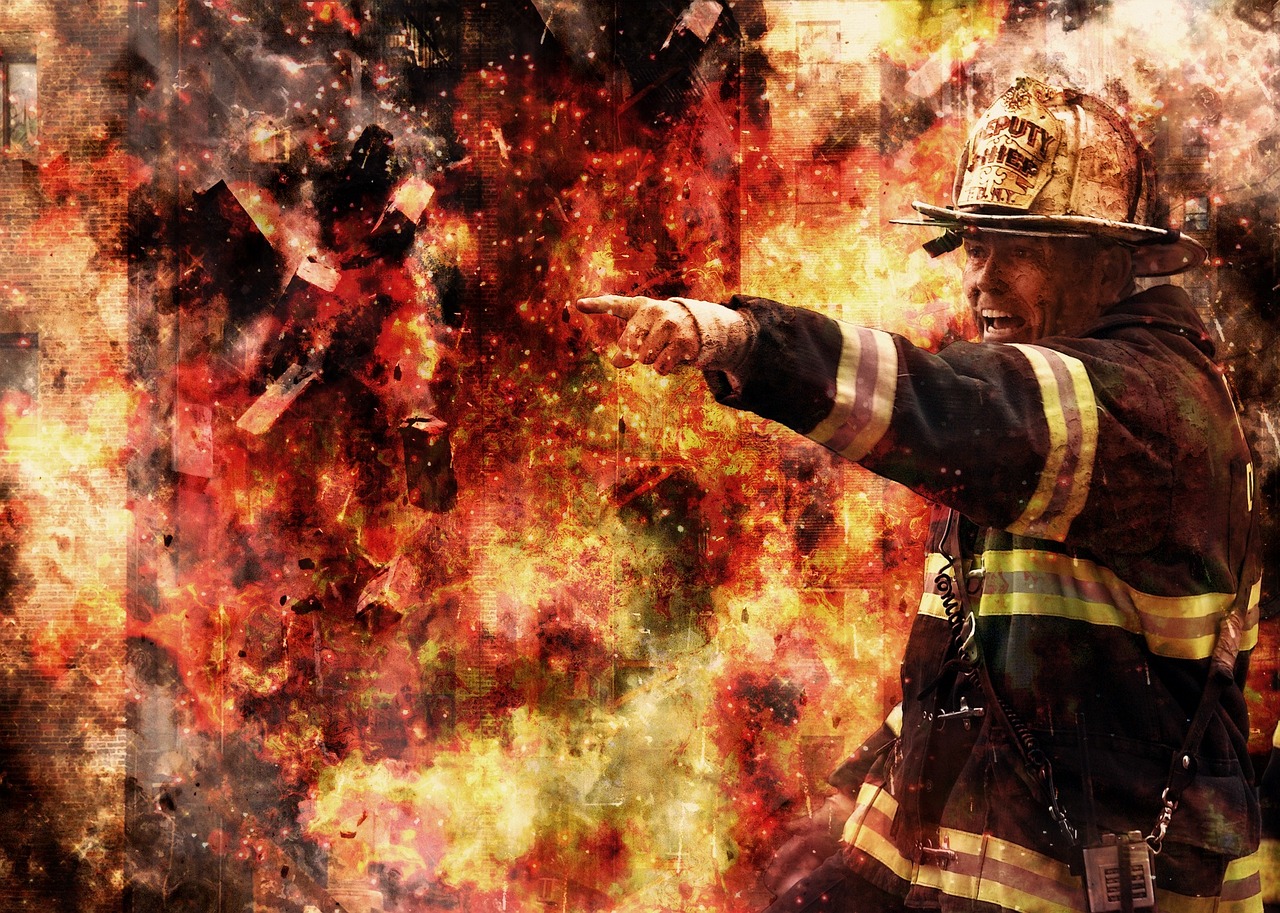
Rebuilding After a Disaster
Rebuilding after a disaster is not just about restoring physical structures; it’s about rekindling hope and resilience within communities. When disaster strikes, the aftermath can feel overwhelming, leaving individuals and families grappling with loss and uncertainty. However, this period also presents an opportunity for growth and renewal. The journey of rebuilding can be likened to planting seeds in a barren field; while it may take time and effort, with the right care and nurturing, life can flourish once again.
To effectively rebuild, it’s essential to take a structured approach that includes both physical reconstruction and emotional healing. This dual focus ensures that while homes and infrastructure are restored, the emotional well-being of individuals is also prioritized. One of the first steps in this process is assessing the damage and determining the immediate needs of the affected areas. This often involves coordinating with local authorities, non-profits, and community members to create a comprehensive recovery plan.
In many cases, financial assistance plays a crucial role in the rebuilding process. Understanding the resources available can significantly ease the burden on those affected. For example, government programs, such as FEMA (Federal Emergency Management Agency) assistance, are designed to help individuals and families recover by providing funds for temporary housing, home repairs, and other disaster-related expenses. Additionally, various non-profit organizations offer grants and loans to support recovery efforts. Here’s a quick overview of potential financial assistance options:
| Type of Assistance | Provider | Details |
|---|---|---|
| Disaster Relief Grants | FEMA | Financial aid for temporary housing and home repairs. |
| Low-Interest Loans | Small Business Administration (SBA) | Loans for businesses to repair or replace damaged property. |
| Community Recovery Funds | Local Non-Profits | Grants for individuals and families affected by disasters. |
Once the financial aspect is addressed, the focus can shift to the actual rebuilding process. This often involves collaborating with contractors, architects, and community planners to design structures that not only replace what was lost but also improve upon it. This is a perfect time to consider implementing sustainable building practices, which can lead to more resilient communities in the face of future disasters. For instance, using eco-friendly materials and energy-efficient designs can contribute to a safer environment and lower utility costs in the long run.
Moreover, it’s crucial to engage the community in the rebuilding efforts. By involving local residents in the planning and decision-making processes, a sense of ownership and pride can be cultivated. Community meetings and workshops can serve as platforms for individuals to voice their needs and ideas, ensuring that the rebuilding efforts reflect the collective vision of the area. This inclusive approach not only strengthens community bonds but also fosters a spirit of collaboration that is essential for long-term recovery.
As the physical structures begin to take shape, it’s equally important to focus on mental health and emotional recovery. Many individuals may still be grappling with trauma from the disaster, and addressing these emotional scars is vital for a holistic recovery. Support groups and counseling services can provide a safe space for individuals to share their experiences and feelings. This process can be incredibly healing, as participants often find solace in knowing they are not alone in their struggles.
In summary, rebuilding after a disaster is a multifaceted process that requires careful planning, community involvement, and emotional support. It’s about creating a stronger, more resilient community that can withstand future challenges. Just as a phoenix rises from the ashes, communities can emerge from the devastation of disasters with renewed strength and hope.
- What should I do first after a disaster? Assess the damage and ensure that you and your loved ones are safe. Then, contact local authorities for assistance.
- How can I find financial assistance? Look into government programs like FEMA and local non-profit organizations that may offer grants or loans.
- What role does community play in rebuilding? Community involvement is crucial for ensuring that rebuilding efforts meet the needs and desires of those affected.
- How can I support my mental health during recovery? Seek professional help, join support groups, and engage in self-care practices to aid emotional recovery.

Financial Assistance Resources
Recovering from a disaster often comes with significant financial burdens. Thankfully, there are numerous available to help individuals and families get back on their feet. Understanding these resources can make a world of difference in the recovery process, easing the stress that comes from unexpected expenses and loss. It's essential to act quickly, as many programs have specific timelines for applications and assistance.
One of the first places to look for help is through government programs. The Federal Emergency Management Agency (FEMA) plays a crucial role in disaster recovery by providing financial assistance to those impacted by disasters. They offer various forms of aid, including housing assistance, personal property replacement, and even funds for necessary medical expenses. To apply for FEMA assistance, individuals can visit their website or call their helpline for guidance on the application process.
In addition to FEMA, there are also state and local programs that offer financial support. Many states have their own disaster relief funds that can provide immediate assistance for housing, food, and other essential needs. It’s a good idea to check with your state’s emergency management agency to learn about available resources. Local non-profit organizations and community groups often step in during times of crisis, offering everything from financial aid to food banks and temporary housing solutions.
Here’s a brief overview of some key financial assistance resources:
| Resource | Description | How to Access |
|---|---|---|
| FEMA | Federal assistance for housing, personal property, and medical expenses. | Visit fema.gov or call their helpline. |
| State Disaster Relief Funds | State-specific financial aid for disaster recovery. | Check your state’s emergency management website. |
| Local Non-Profits | Community-based organizations providing food, housing, and financial aid. | Contact local charities or community centers. |
Moreover, it’s essential to explore grants and loans specifically designed for disaster recovery. The Small Business Administration (SBA) offers low-interest loans to businesses and homeowners to repair or replace damaged property. These loans can be a lifeline for those looking to rebuild their lives and livelihoods after a disaster. Applying for these loans typically requires documentation of damage and a detailed plan for how the funds will be used.
Another great option is to look into crowdfunding platforms. Many people have turned to sites like GoFundMe to raise money for their recovery efforts. This can be an effective way to gather support from friends, family, and even strangers who may want to help. Sharing your story can resonate with others and encourage them to contribute to your recovery.
In summary, while the road to recovery after a disaster can be daunting, there are numerous financial assistance resources available. By exploring government programs, local non-profits, and even crowdfunding options, individuals can find the support they need to rebuild their lives. Remember, reaching out for help is a sign of strength, and taking that first step can lead to a brighter future.
- What should I do first after a disaster? Start by ensuring your safety and the safety of those around you. Then, assess your immediate needs and reach out for help.
- How can I apply for FEMA assistance? You can apply online at the FEMA website or call their helpline for assistance with the application process.
- Are there any deadlines for financial assistance applications? Yes, many programs have specific deadlines, so it's crucial to apply as soon as possible.
- Can I get help if I don’t have insurance? Yes, there are resources available for those without insurance, including government assistance programs and local charities.
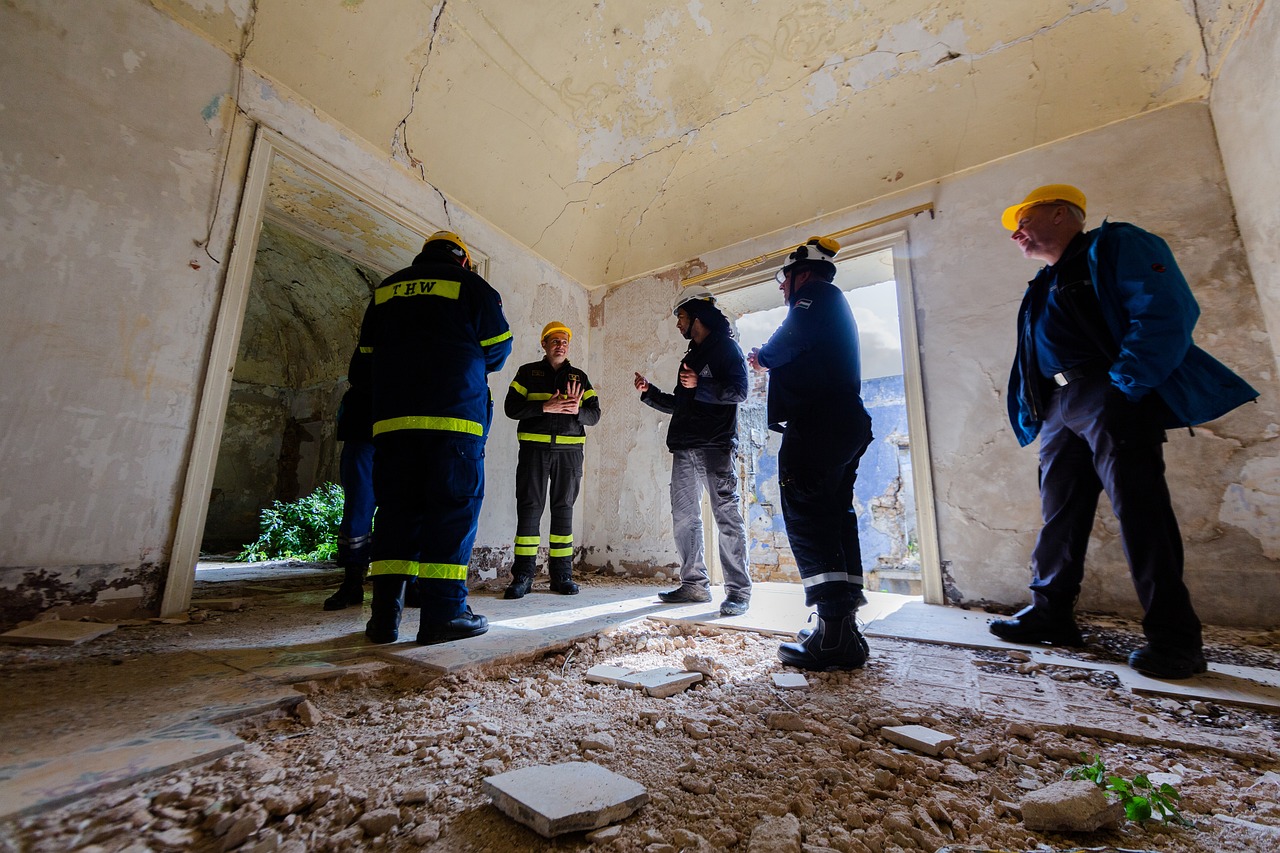
Long-Term Recovery Planning
After a disaster strikes, the journey to recovery can feel overwhelming. It’s not just about picking up the pieces; it’s about laying down a solid foundation for a brighter future. Long-term recovery planning is essential because it helps individuals and communities transition from immediate survival to sustainable living. Think of it like building a house: you need a strong framework to support everything that comes after. Without proper planning, you might find yourself in a cycle of temporary fixes rather than lasting solutions.
One of the first steps in long-term recovery planning is to set clear, achievable goals. These goals should address both immediate needs and long-term aspirations. For example, if you lost your home, your immediate goal might be to secure temporary housing, while a long-term goal could involve purchasing or building a new home. This dual focus ensures that you’re not just reacting to the present but actively shaping your future.
To effectively plan for recovery, it’s important to consider various factors that influence your situation. These might include:
- Financial Stability: Assess your financial resources and identify potential sources of income or assistance.
- Community Resources: Engage with local organizations that can offer support in rebuilding efforts.
- Emotional Well-being: Factor in mental health support as a critical component of your recovery plan.
Additionally, creating a timeline for your recovery can help keep you on track. This timeline should include milestones that mark your progress. For example, you might set a target date for securing a new job, completing repairs on your home, or enrolling in a community program. By breaking down your recovery into manageable steps, you can maintain motivation and a sense of accomplishment.
Moreover, collaborating with local authorities and disaster recovery organizations can provide valuable insights and resources. These partnerships can help you access funding, training programs, and other essential services. It’s like having a map in uncharted territory; it guides you and helps you make informed decisions.
Finally, remember that recovery is not a linear process. There will be ups and downs, and that’s perfectly normal. Be prepared to reassess your goals and strategies as circumstances change. Flexibility is key; it allows you to adapt to new challenges and opportunities as they arise. Embrace the journey, and don’t hesitate to reach out for support when you need it.
Q: What should I prioritize in my long-term recovery plan?
A: Focus on immediate needs such as housing and financial stability, while also setting long-term goals for personal and community rebuilding.
Q: How can I find financial assistance for recovery?
A: Look into government programs, non-profit organizations, and local community resources that specialize in disaster recovery assistance.
Q: Is it important to seek mental health support during recovery?
A: Absolutely! Emotional well-being is crucial for effective recovery. Consider therapy or support groups to help process your experiences.
Q: Can I change my recovery plan later?
A: Yes! Recovery is a dynamic process, and being flexible with your plans allows you to adapt to new challenges and opportunities.
Frequently Asked Questions
- What are the common emotional responses after a disaster?
After a disaster, it's normal to experience a range of emotions. You might feel shock, disbelief, anger, or even guilt. These feelings can be overwhelming, but recognizing them is the first step toward healing. It's like a storm passing through; once you acknowledge the chaos, you can begin to find your footing again.
- How can I build a support network during recovery?
Building a support network is crucial. Reach out to family and friends, and don’t hesitate to connect with local community resources. Think of it as creating a safety net; the more connections you have, the stronger you’ll feel. Support groups can also be a great way to meet others who understand what you're going through.
- When should I seek professional help?
If your feelings become too intense or persistent, it might be time to seek professional help. Mental health professionals, like therapists or counselors, can offer valuable support and coping strategies. It's like having a guide through a dense forest; they can help you navigate your emotions and find a clearer path.
- What types of therapy are effective for disaster survivors?
There are several therapeutic approaches that can be beneficial, including cognitive-behavioral therapy (CBT) and group therapy. CBT helps you understand and change negative thought patterns, while group therapy provides a sense of community. Both can be powerful tools in your recovery toolbox!
- What self-care strategies can I implement?
Self-care is essential in your recovery journey. Techniques like mindfulness, meditation, and regular physical activity can help boost your emotional well-being. Think of it as refueling your car; you need to take care of yourself to keep moving forward.
- How can I find financial assistance after a disaster?
There are various resources available for financial assistance, including government programs and non-profit organizations. Researching these options can help you get back on your feet. It's like having a lifeline; knowing where to turn can make all the difference in your recovery.
- What should I include in my long-term recovery plan?
Your long-term recovery plan should address both immediate needs and future goals. Consider factors like housing, employment, and emotional support. Planning ahead is like setting a course on a map; it helps you stay focused and organized as you rebuild your life.



















